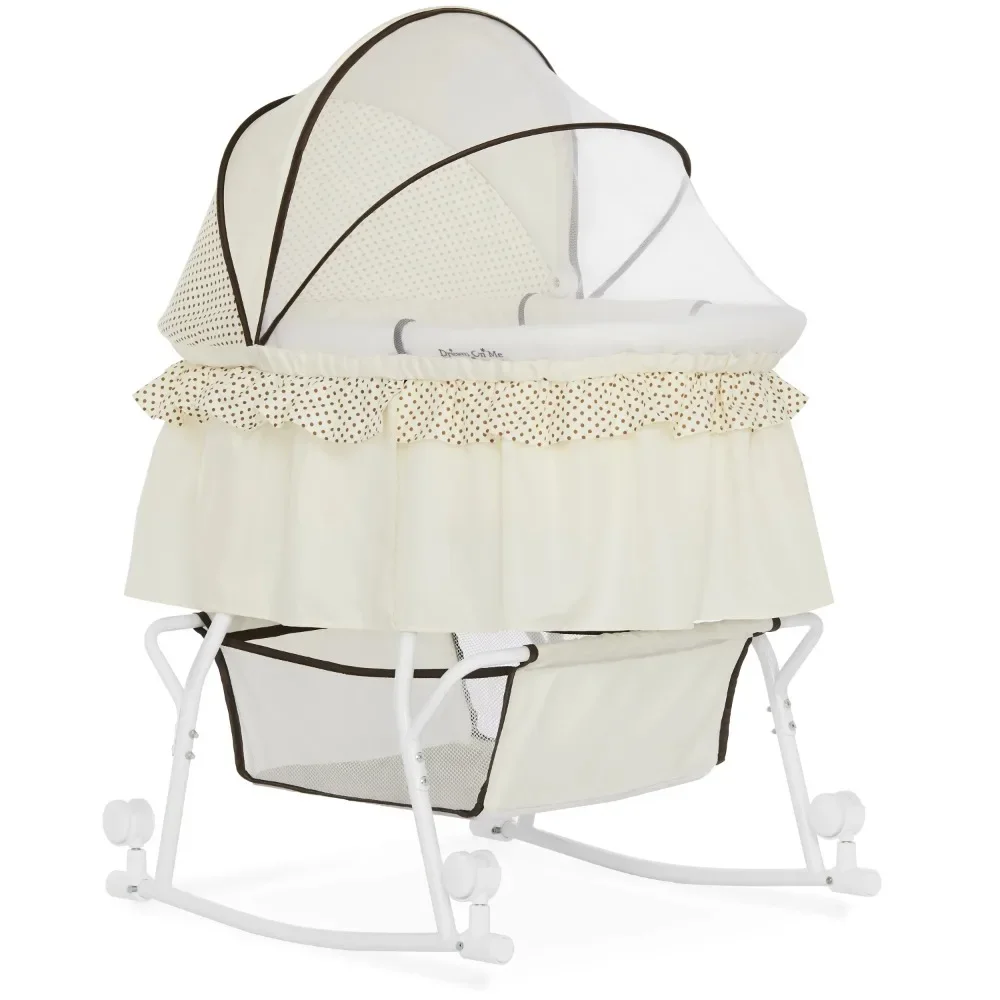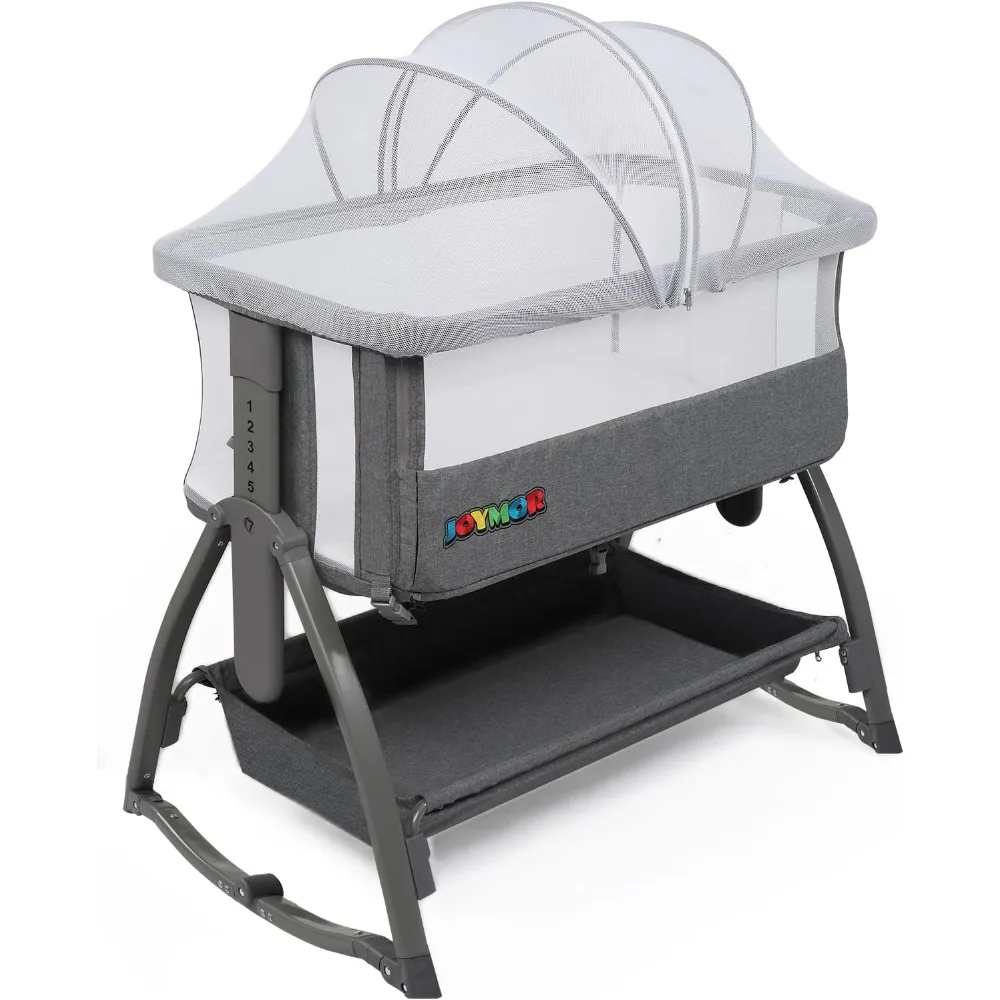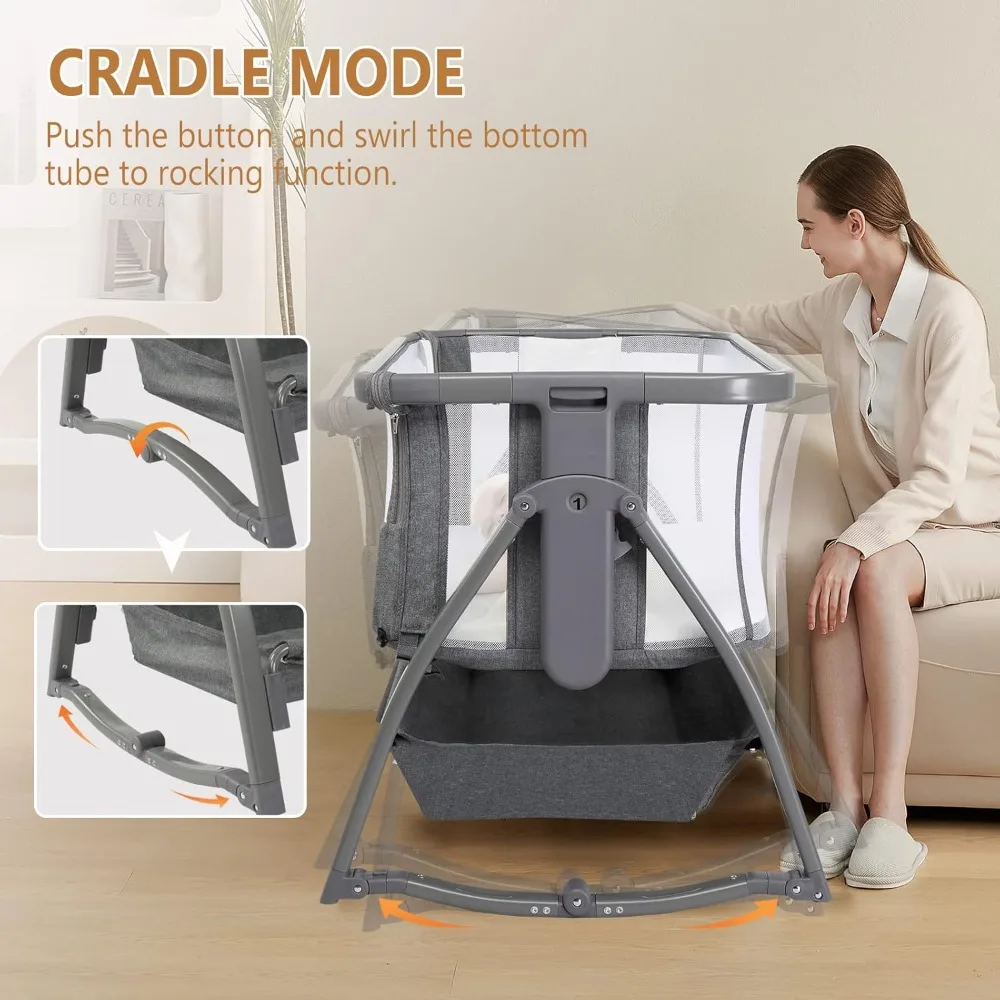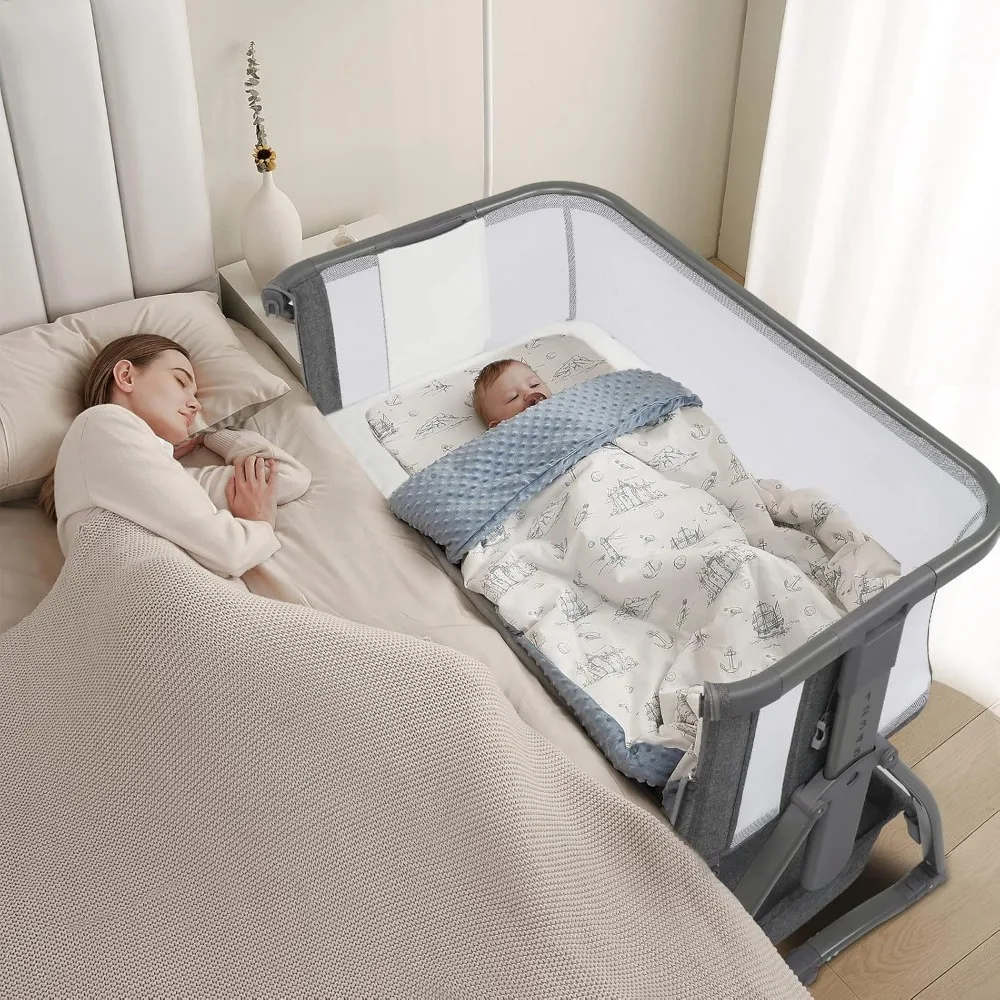Introduction
Welcoming a newborn into your home is a magical and transformative experience, but it also comes with a myriad of decisions to make. One of the most crucial choices is where your baby will sleep. Among the plethora of options available, cradles and bassinets are two of the most popular choices for newborns. Understanding the key differences, benefits, and potential drawbacks of each can help you make an informed decision that best suits your family’s needs. This article will delve into the cradle vs bassinet debate, providing you with comprehensive insights to determine which is best for your newborn.

Understanding Cradles
Cradles are time-honored sleeping solutions that have been used for centuries. Typically made from wood, cradles are designed to gently rock from side to side, mimicking the soothing motions that comfort babies. This rocking motion can be incredibly effective in helping newborns fall asleep and stay asleep, making cradles a popular choice among parents. Cradles are often larger than bassinets, offering more room for growth, but they are still compact enough to fit next to your bed for convenient nighttime access.
The design of cradles usually includes a sturdy frame with slatted sides to allow for ventilation. These open sides provide visibility, enabling parents to keep an eye on their baby without having to get up. Many cradles also come with locking mechanisms to prevent rocking when it’s not needed, adding an extra layer of safety.
Understanding Bassinets
Bassinets are modern, versatile, and often more portable sleeping solutions for newborns. They are typically lighter and smaller than cradles, making them easy to move from room to room. This portability allows parents to keep their newborns close during the day and at night without much hassle. Many bassinets come with additional features like storage pockets, canopies, and built-in vibration settings to provide extra comfort and convenience.
The design of a bassinet generally includes a basket-like structure mounted on a stand, with walls made from breathable mesh or fabric. These mesh sides enhance airflow and allow parents to see their baby clearly, even from a distance. Some bassinets also come with adjustable height settings, making it easier to align the bassinet with your bed for easy access during nighttime feedings.
Portability and Convenience
One of the most significant factors to consider in the cradle vs bassinet debate is portability and convenience. Bassinets often have the upper hand in this category due to their lightweight and compact design. Many bassinets come with wheels or foldable features, making it easy to move them from room to room and even travel with them. This mobility allows you to keep your baby close at all times, whether you’re in the living room during the day or in your bedroom at night.
Cradles, while generally larger and heavier, can also offer some level of portability depending on their design. Some modern cradles come with detachable bases or are designed to be folded flat for storage or transport. However, they are usually bulkier than bassinets, which might make moving them around more cumbersome.
Longevity and Growth
Another critical consideration is how long the cradle or bassinet will be useful for your baby. Cradles, due to their larger size, generally offer more longevity and can accommodate a growing baby for a longer period, often up to six months or more. This extended use can make them a more cost-effective option in the long run, as you won’t need to transition to a crib as quickly.
Bassinets are typically designed for newborns and younger infants, with weight limits that usually range from 15 to 20 pounds. Most babies will outgrow their bassinet within the first four to six months, necessitating a switch to a crib. However, the compact size of a bassinet can be a great advantage during those early months when you want your baby to sleep close by.
Space and Aesthetics
Space and aesthetics are essential factors to consider when choosing between a cradle and a bassinet. Cradles, with their larger size and often wooden construction, can take up more space and may require a dedicated area in your home. However, they can add a classic, timeless charm to your nursery or bedroom, blending seamlessly with various interior styles. If space is not a constraint and you appreciate the traditional aesthetic, a cradle could be an attractive choice.
Bassinets, on the other hand, are generally more compact and designed with modern materials like mesh and lightweight fabrics. They can easily fit into smaller spaces and are often designed to complement contemporary home decor. Some bassinets come with additional features like storage compartments and adjustable height settings, adding to their functionality without compromising on style.
Cost and Budget
Budget is another crucial factor in the cradle vs bassinet comparison. Generally, bassinets are more affordable than cradles due to their smaller size and simpler construction. Basic models can start at a lower price point, making them an accessible option for new parents on a budget. However, higher-end bassinets with additional features like built-in vibration, music, or storage can be more expensive.
Cradles, due to their larger size and often more intricate wooden construction, can be pricier. Custom and designer cradles can add significant cost but often offer superior craftsmanship and aesthetic appeal. While the initial investment in a cradle might be higher, their extended usability can make them a worthwhile investment if you plan to use the cradle for multiple children or for a longer period.

Ease of Assembly and Use
The ease of assembly and day-to-day use is an important consideration for new parents. Bassinets generally have the upper hand in this category due to their simpler design. Most bassinets come pre-assembled or require minimal assembly, making them user-friendly and convenient. The straightforward design of bassinets also means they’re easy to set up and adjust, with features like wheels or foldable frames enhancing their functionality.
Cradles, while often more substantial and requiring more assembly, can still be user-friendly if you choose a well-designed model. Some cradles come with clear instructions and all necessary hardware, making assembly a manageable task. However, the more complex construction can make initial setup more time-consuming compared to bassinets.
Ease of use extends beyond assembly to day-to-day functionality. Features like adjustable height, storage compartments, and easy access for nighttime feedings can significantly enhance your experience. Evaluate the user-friendliness of each option and consider how it will fit into your daily routine. A product that is easy to assemble, adjust, and use can save you time and effort, contributing to a more seamless parenting experience.
Health and Comfort
Ensuring the health and comfort of your newborn is paramount when choosing between a cradle and a bassinet. Both options should provide a safe, comfortable sleeping environment free from harmful chemicals and allergens. Look for products made from non-toxic materials and free from harmful substances like formaldehyde and volatile organic compounds (VOCs).
The design of the sleeping surface also plays a crucial role in your baby’s comfort. Both cradles and bassinets should come with a firm, supportive mattress that aligns with safety standards. Some models offer additional comfort features like memory foam or breathable materials to enhance your baby’s sleep quality.
In terms of ergonomics, both options can be designed to support healthy development. However, bassinets with adjustable height settings can offer added convenience during nighttime feedings, reducing the need for parents to bend over or lift their baby frequently. Cradles, with their gentle rocking motion, can help soothe and comfort your baby, promoting longer and more restful sleep periods.
Personal Preferences and Lifestyle
Your personal preferences and lifestyle play a significant role in the cradle vs bassinet decision. Consider how each option fits into your daily routine and long-term plans. If you value portability and ease of movement, a bassinet’s lightweight and mobile design might be more suitable. For parents who appreciate traditional aesthetics and extended usability, a cradle could be the better choice.
Additionally, consider your plans for nighttime feedings and bonding. Bassinets with adjustable height settings and easy access can make nighttime care more convenient, fostering a closer bond with your newborn. Cradles, with their classic design and soothing rocking motion, can create a nurturing and calming environment for your baby.

Conclusion
Choosing between a cradle and a bassinet is a significant decision that impacts your baby’s comfort, safety, and your convenience as a parent. Both options offer unique benefits and potential drawbacks, and your choice should align with your family’s needs, living space, and lifestyle.
Cradles provide a classic, durable option with a soothing rocking motion and extended usability. They are ideal for parents who appreciate traditional design and have ample space. Bassinets offer modern, portable solutions with additional features like adjustable heights and easy mobility, making them perfect for smaller spaces and busy parents.
